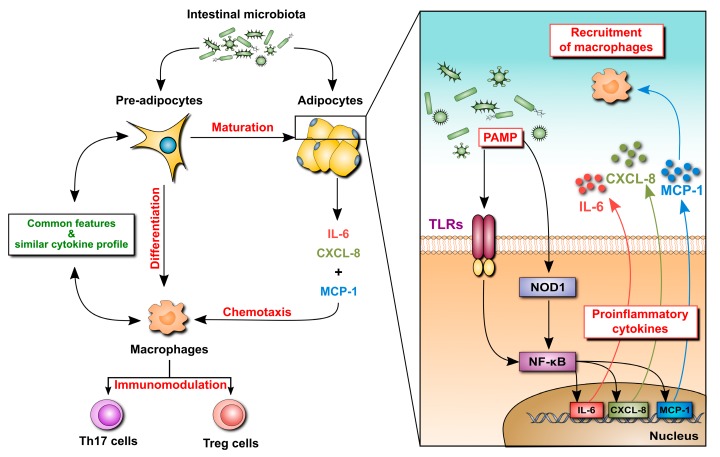Figure 2.
Potential mechanisms underlying the involvement of mesenteric adipocytes in the intestinal inflammatory response in inflammatory bowel disease (IBD). Pre-adipocytes in the mesenteric fat respond to translocated intestinal bacteria by sensing microbe-derived molecules (pathogen-associated molecular patterns, PAMP) with pattern recognition receptors, such as toll-like receptors (TLRs) or nucleotide oligomerization domain receptor-1 (NOD1). The resulting signaling cascades lead to activation of transcription factors (such as NF-kappa B) and induction of genes for proinflammatory cytokines and chemokines. This leads to adipose tissue infiltration by leukocytes, including macrophages that modulate local inflammation and immune response. In addition, pre-adipocytes can differentiate into macrophages further driving the inflammatory reaction.

